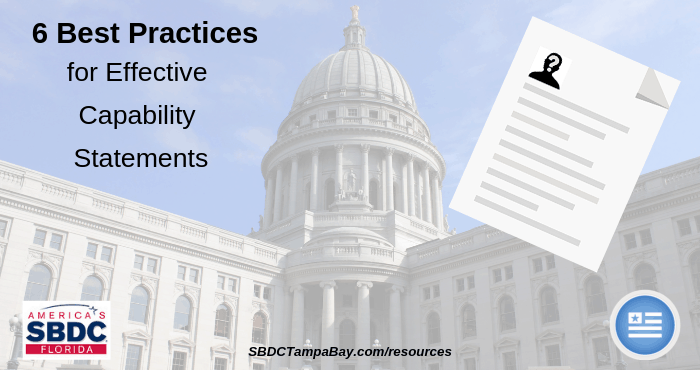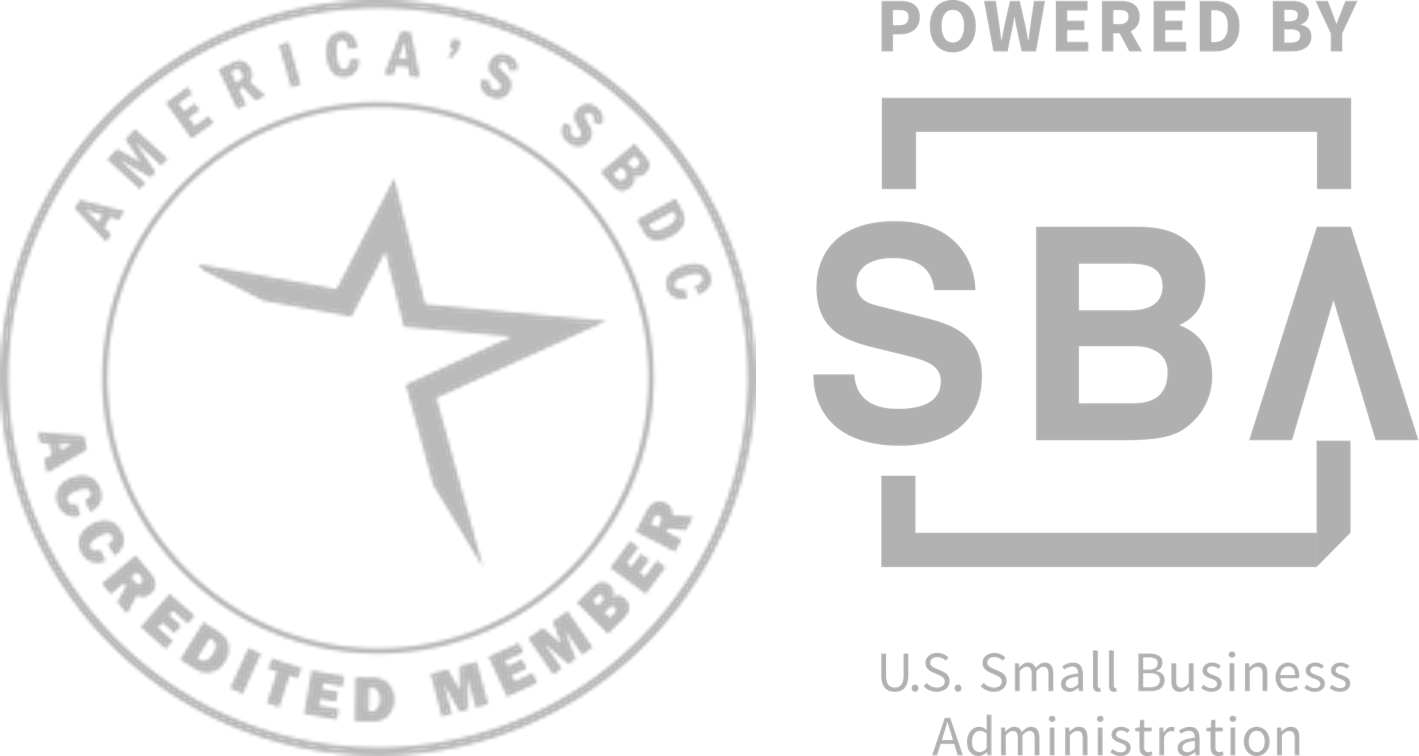6 Best Practices for Effective Capability Statements
by Karen Krymski | Florida PTAC at USF | November 7, 2018
Many of the clients who seek government contracting assistance look to PTAC consultants for direction and strategy so that they can be successful vendors to the federal government. Initially, there are many boxes of “to do’s” to check when a company is starting this initiative.
Of course, on this list are the company’s legal registration, getting EIN and DUNS numbers and then, of course, the SAM registration.
The PTAC procurement specialist can guide a potential contractor thru these very beginning steps, but following that, is the real effort of understanding who to sell to in the FedGov (agency). How do they buy. How much do they buy? Who are the major suppliers of the goods and/or services?
In many ways, the next biggest challenge is the development of a quality Capability Statement or as I like to refer to it, your business’ resume that could be the first impression that a federal officer generates from seeing the company on paper.
From a small business officer’s perspective, here are important items to keep in mind when developing a Capability Statement:
- Remember that the initial document is an outline or draft from which you will “personalize,” just as you do with a resume when applying for a job. The opportunity may dictate what verbiage is highlighted/changed on the Capability Statement. The Past Performance, Core Capabilities and other sections may need revision to improve a potential vendor’s chances of taking favorable next steps.
- Only use bullet points and short phrases that concisely convey the message. The contracting officer, prime contractor, or any other decision-maker will give the Capability Statement about 15 to 20 seconds to leave an impression. If the document is wordy and confusing, he or she will move on.
- Another important note is that socio-economic certifications are the “icing on the cake,” that is, it is the agency’s understanding as to how well the vendor can perform that will be the first level of review. Socio-economic certifications are secondary and it should never be expected that they will be prioritized over capability and past performance.
- In the case of a Service-Disabled Veteran-Owned Small Business (SDVOSB), it seems that the Veterans Affairs’ representatives prefer placement of the verification logo at the top of the Capability Statement. Because of their contracting preference for SDVOSBs, this makes the initial assessment of the paperwork easier for them.
- To accurately represent your company on the Capability Statement, it may be best to seek input from outsiders of the organization. This is especially helpful for the “Differentiators” section. Former and current clients may offer insight into why they made the decision to hire a company and what they see as key strengths. Oftentimes, employees and company officers have difficulty evaluating what they do best.
- Finally, and this may be obvious, eliminate any typos or misspelled words. Use good grammar and have someone else read it when you’ve finished. Remember, there’s only one chance to make a good first impression.
This Procurement Technical Assistance Center (PTAC) is funded in part through a cooperative agreement with the Defense Logistics Agency.






Karen E. Krymski
Consultants, Government Contracting Consultants, Krymski, TampaFlorida PTAC at USF, Tampa
Specialty: Procurement, Marketing
Karen Krymski has more than 20 years of experience as an entrepreneur, owning a firm that specialized in marketing, business development, public affairs, organizational leadership and strategic planning. Clients ranged from start-up small businesses to Fortune 500 companies (gold emblem brands). Her company was retained to assist in achieving clients’ strategic direction, branding and revenue goals and most retained her firm for successful execution following the planning process. Krymski’s industry knowledge spans a broad range and includes medical (behavioral health, physician practices and home healthcare) and dental; utilities (water, wastewater, solid waste and recycling); and retail promotions. She built a successful federal government business pipeline for a women-owned IT security company and also founded a local chapter of a national women’s business organization, achieving 350 invested members within a four year period. She earned a bachelor’s in health education and a master’s in public health planning from the University of Pittsburgh and completed a hospital administrative residency in Fort Myers. In 2007, she was honored as the Managing Director of the Year by eWomenNetwork, was a finalist in 2008 for the Tampa Bay Business Journal’s Businesswoman of the Year and was awarded the Iconic Woman award in 2012 from the St. Petersburg Chamber of Commerce.